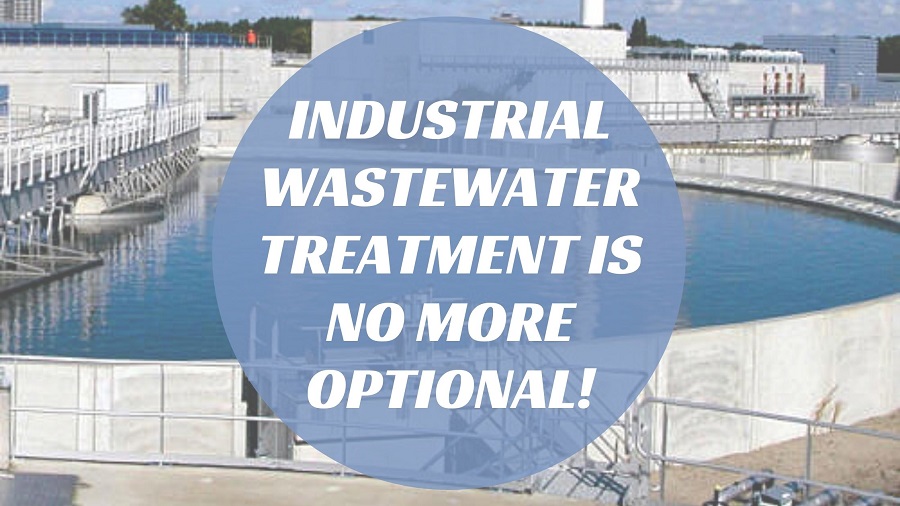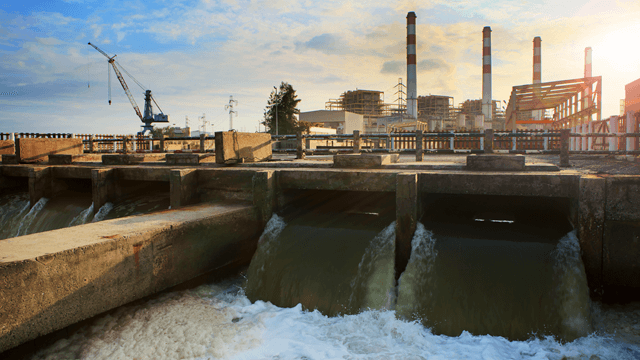Industrial Waste Water Treatment-- Cutting-Edge Technologies for Water Purification
Industrial Waste Water Treatment-- Cutting-Edge Technologies for Water Purification
Blog Article
Technologies and Developments in Industrial Waste Water Therapy Technologies
The landscape of industrial wastewater therapy is going through a transformative change, driven by advancements that enhance both effectiveness and sustainability. Arising innovations, such as membrane layer bioreactors and microbial fuel cells, are redefining contaminant elimination processes while adding to power generation. Source recuperation methods are getting traction, lining up with circular economic situation principles. As regulative criteria develop, the integration of AI and artificial intelligence into wastewater administration systems assures to improve procedures and make certain compliance. Nevertheless, the complete effects of these developments increase essential questions about their scalability and long-lasting effect on market practices.
Introduction of Drainage Treatment Technologies
Wastewater treatment technologies encompass an array of approaches created to eliminate contaminants from commercial effluents prior to their release into the setting. These modern technologies are important for preserving environmental balance and making certain conformity with ecological policies. The primary groups of wastewater therapy include physical, chemical, and organic techniques, each serving distinctive functions based on the nature of the impurities existing.

Organic therapy techniques employ bacteria to weaken organic matter, making them especially reliable for organic-rich effluents. Strategies like activated sludge and biofilm reactors harness the natural destruction abilities of germs, causing substantial decreases in biochemical oxygen demand (BOD)
Advanced Filtration Techniques
Advanced filtering methods represent a crucial development in the realm of industrial wastewater treatment, improving the effectiveness of pollutant removal processes. Industrial Waste Water Treatment. These techniques include a series of innovations, including microfiltration, ultrafiltration, nanofiltration, and reverse osmosis, which offer sequential barriers for various bit dimensions and chemical frameworks
Microfiltration and ultrafiltration use membrane systems to eliminate suspended solids, microorganisms, and bigger natural particles, enhancing the quality of effluent prior to further therapy. Nanofiltration links the space between ultrafiltration and reverse osmosis, effectively removing divalent ions and organic substances, thus reducing the lots on downstream procedures.
Reverse osmosis provides the highest degree of filtration by enabling only water and small particles to travel through its semi-permeable membranes, making it perfect for reclaiming high-grade water from commercial effluents. Recent advancements in membrane layer innovation, including the advancement of more sturdy and fouling-resistant materials, have actually substantially improved functional efficiency and lowered expenses.
Including these innovative filtering techniques not only enhances the general treatment procedure but likewise contributes to sustainability initiatives by enabling water reuse and source recovery in commercial settings. (Industrial Waste Water Treatment)
Organic Therapy Advancements

Moreover, the development of crafted biological systems, such as membrane bioreactors (MBRs), incorporates biological therapy with sophisticated membrane purification. This combination permits greater effluent high quality and lowered impact, making it suitable for space-constrained commercial facilities. Innovations in genetically crafted microorganisms have actually also emerged, boosting the biodegradation of certain contaminants, such as drugs and heavy steels, that are traditionally testing to remove.
Furthermore, the implementation of bioaugmentation methods, where useful microorganisms are presented to enhance the existing biological treatment procedures, has actually shown encouraging results in enhancing therapy performance. These technologies collectively symbolize a trend towards even more sustainable and effective biological treatment approaches look here that can adjust to the evolving complexities of commercial wastewater streams. As industries continue to prioritize ecological conformity, these biological developments will certainly play a critical function in wastewater administration.

Source Healing Methods
In commercial settings, the integration of source recovery approaches has come to be progressively vital for boosting sustainability and reducing waste. These methods concentrate on drawing out valuable materials and power from wastewater streams, consequently transforming prospective pollutants into multiple-use resources.
One noticeable technique is nutrition recuperation, where nitrogen and phosphorus, typically existing in excess in wastewater, are recorded and converted into plant foods. This not only minimizes ecological effects yet also supplies a circular economic situation solution for agricultural applications. In addition, technologies such as anaerobic food digestion enable the conversion of organic waste into biogas, an eco-friendly power source that can balance out fossil gas use in industrial procedures.
Furthermore, advanced purification and membrane layer technologies help with the recuperation of commercial by-products such as metals and salts. These recuperated products can be rehabilitated click for source into production procedures, minimizing the need for virgin resources.
Future Trends in Waste Water Administration
As markets significantly focus on sustainability, the future of wastewater More about the author management is set to undergo considerable improvements. Technical innovations, such as man-made knowledge and equipment understanding, will certainly enable more efficient monitoring and management of wastewater systems. These technologies can predict maintenance needs, optimize therapy procedures, and boost decision-making, inevitably lowering functional prices and ecological effect.
Furthermore, the integration of circular economy concepts will certainly play a critical duty in wastewater administration. Industries are expected to move in the direction of systems that not just treat wastewater however also recover valuable sources, such as nutrients, water, and power. This shift will minimize waste and advertise the reuse of materials, aligning with global sustainability goals.
Arising treatment techniques, such as membrane layer bioreactors and advanced oxidation processes, will certainly additionally enhance the effectiveness of wastewater therapy, enabling higher top quality effluents appropriate for reuse. In addition, regulatory frameworks are most likely to develop, highlighting more stringent requirements for wastewater discharge and encouraging sectors to take on ingenious treatment options.
Verdict
In conclusion, the advancement of commercial wastewater therapy modern technologies shows a significant change in the direction of boosted performance and sustainability (Industrial Waste Water Treatment). Innovations in advanced filtration methods, organic treatments, and source healing methods highlight the market's dedication to ecological stewardship.
The landscape of industrial wastewater treatment is undertaking a transformative shift, driven by technologies that improve both performance and sustainability.Wastewater therapy technologies encompass a range of methods developed to eliminate pollutants from industrial effluents before their release into the environment.Utilizing the power of biological processes has led to considerable advancements in the treatment of industrial wastewater.Additionally, the implementation of bioaugmentation techniques, where useful microorganisms are introduced to enhance the existing organic therapy procedures, has shown encouraging results in improving therapy efficiency. These advancements collectively represent a trend in the direction of even more efficient and lasting biological treatment methodologies that can adjust to the advancing complexities of industrial wastewater streams.
Report this page